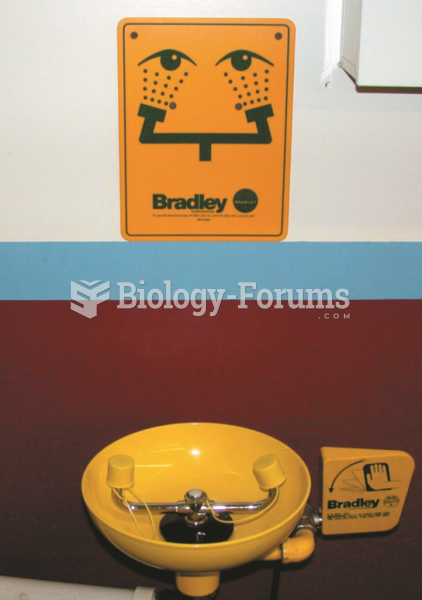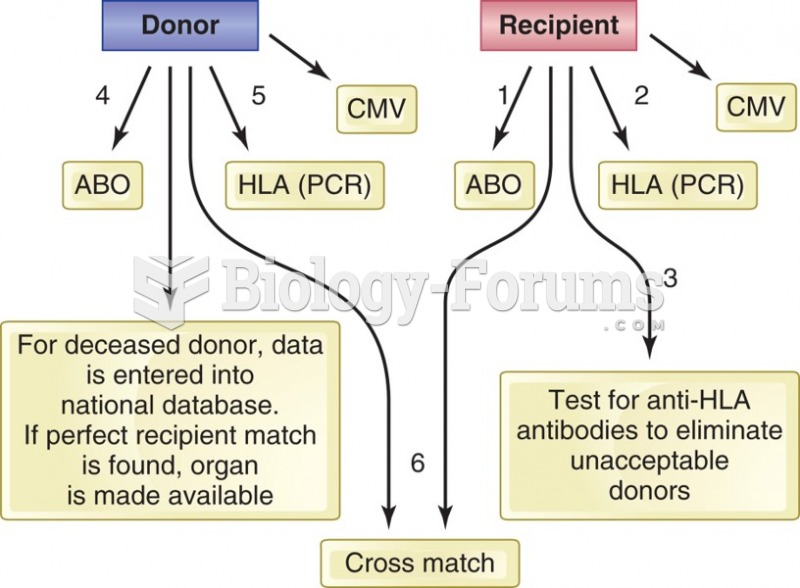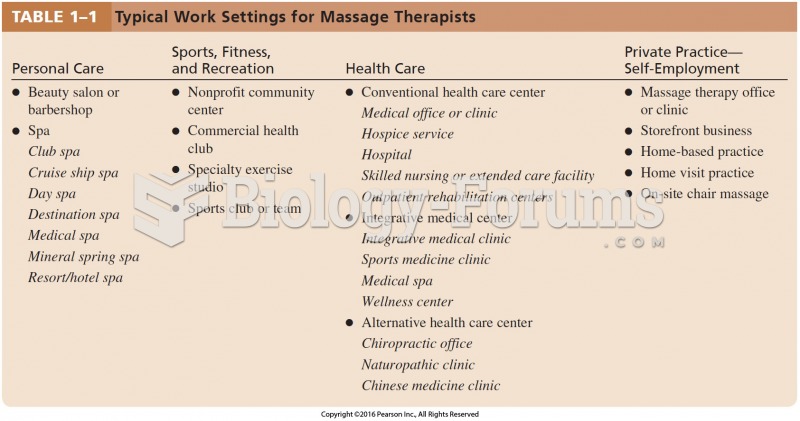|
|
|
The tallest man ever known was Robert Wadlow, an American, who reached the height of 8 feet 11 inches. He died at age 26 years from an infection caused by the immense weight of his body (491 pounds) and the stress on his leg bones and muscles.
Chronic marijuana use can damage the white blood cells and reduce the immune system's ability to respond to disease by as much as 40%. Without a strong immune system, the body is vulnerable to all kinds of degenerative and infectious diseases.
This year, an estimated 1.4 million Americans will have a new or recurrent heart attack.
Carbamazepine can interfere with the results of home pregnancy tests. If you are taking carbamazepine, do not try to test for pregnancy at home.
The eye muscles are the most active muscles in the whole body. The external muscles that move the eyes are the strongest muscles in the human body for the job they have to do. They are 100 times more powerful than they need to be.
 A typical eye wash station. A thorough flushing of the eyes with water is the first and often the ...
A typical eye wash station. A thorough flushing of the eyes with water is the first and often the ...
 Typical timing marks. The numbers of the degrees are on the stationary plate and the notch is on ...
Typical timing marks. The numbers of the degrees are on the stationary plate and the notch is on ...





